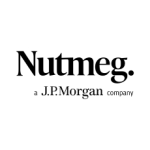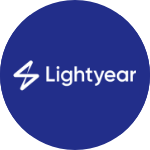How to get tax-free income using your ISA allowance
With the 2015 ISA season in full flight, time is running out to maximise the valuable tax benefit of your ISA allowance before the deadline on 5th April 2015 – otherwise it is gone forever. Many investors will be looking for the opportunity to receive tax-free income from their ISA allowance, which currently stands at £15,000 until the end of the tax year. With the potential to use this entire amount in either a cash or investment ISA, now could be a great time to make the most of tax-free income opportunities for your 2015 ISA allowance as well as looking towards high-income ISA options for the new tax year ahead.
Why seek income from your ISA allowance?
Generating an income is one of the most common goals when it comes to investing, and so the opportunity to receive tax-free income is one that investors will not want to miss out on. As record low interest rates continue, and the returns available from fixed rate bonds remain unappealing, it is understandable why many investors are turning to income generating investment opportunities. Using your ISA allowance allows you to receive all the benefits of this income tax-free, thereby protecting more of your hard-earned capital from the taxman.
Get frequent income payments
There are many options to consider when seeking income from your capital via an ISA, including the level of income offered, degree of risk, and frequency of income payments. Many investment plans offer the option of annual, bi-annual, quarterly payments, but for those seeking regular income, a plan which offers monthly income payments is often the most appealing.
Take advantage of ISA transfers
Another priority at this time of year is to review your ISA transfer options. Make sure that you don’t squander the valuable tax efficient benefits of an ISA by keeping your capital in a poorly performing investment. If you find that your current ISA is no longer paying a competitive rate, most ISAs permit you to transfer existing ISAs to them without charge – although don’t forget to check whether there are any penalties from your existing provider. All of the plans listed below are available for both new ISA investment and ISA transfer.
Tax-free income options using your ISA allowance – our selection
To help you compare ISA investment options for income, here are some of our ISA season income best-sellers:
5.28% fixed income, monthly payments
The Investec Enhanced Income Plan could appeal to investors keen to receive income from their ISA allowance – the current version offers monthly payments, pays 5.28% fixed income each year, and will return your original capital at the end of the term unless the FTSE falls by more than 50%. All these factors mean that you know exactly how much you will be paid, when, and for how long, while also having some capital protection against a falling stock market.
If the Index does fall by more than 50% during the six year term and also finishes below its starting level then your initial capital will be reduced by 1% for each 1% fall, so you could lose some or all of your original investment.
When the tax you would pay outside of an ISA is taken into account, this plan offers basic rate tax payers the equivalent of 6.60% and for higher rate tax payers this is equivalent to 8.80%. With low savings rates continuing to force many to consider taking on more risk with some of their capital, this plan could offer a compelling opportunity. What’s more, the Investec Enhanced income plan offers a dual tax year option, with the opportunity to invest using both your 2014/15 and 2015/16 ISA allowance.
Click here to find out more about the Investec Enhanced Income Plan »
The opportunity for up to 9.48% annual income, quarterly payments
The Focus FTSE 4 Quarterly Income Plan offers an opportunity for up to 9.48% annual income dependent on the performance of four FTSE 100 companies. Each quarter, an income payment of 2.37% will be made, as long as the value of all four shares is at or above 60% of their value at the start of the investment. However, if one or more shares are below this level, no income payment will be made for that quarter. The return of your initial investment also depends on the performance of the same four shares. On the final day of your investment, should the value of the lowest performing share be less than 50% of its value at the start of the plan, your initial capital will be reduced by 1% for each 1% fall, so you could lose some or all of your initial investment.
The 60% barrier means that each share can fall up to 40% and investors can still receive 9.48% income which could be a compelling feature of this plan, especially as typical yields on UK equity income funds are under 5%. For those paying basic rate tax the income yield of 9.48% is equivalent to 11.85%, which for higher rate tax payers the equivalent is 15.8%.
However, investors will need to take into account the fact that this high income and your return of capital depends of the performance of four shares and that past performance of these four shares is not a guide to future performance.
Click here to find out more about the Focus FTSE 4 Quarterly Income Plan »
Income fund options for your ISA
Understanding how and when income is paid, as well as the treatment of your initial capital over time, are important considerations. The income yield as well as any rise or fall in the value of your original capital should always be considered together since both have an effect on your overall return.
It is important to remember that income yields from investment funds are not guaranteed and are therefore subject to fluctuations. Fixed term investment plans like those listed above contain what is known as conditional capital protection which means your initial capital is returned at the end of the plan term unless the underlying investment has fallen by a pre-defined amount. With investment funds your capital is fully at risk on a daily basis, although your investment is spread across a large number of holdings, with the aim of potentially mitigating the impact of one of your holdings failing.
We have listed some current income investment fund options for your ISA allowance below:
Quarterly income payments from one of the UK’s top fund managers
Having spent 25 years at Invesco Perpetual looking after more than £30bn of assets, Neil Woodford is one of the best known UK fund managers, which is why the launch of the CF Woodford Equity Income Fund last May was one of the most eagerly anticipated fund launches in UK fund management history.
Utilising the same investment approach employed by Mr Woodford at Invesco Perpetual, the Woodford Equity Income Fund targets capital growth and an anticipated income yield of 4%, with income payments made quarterly. The fund’s investment objective is to provide investors with long-term appreciation through investing in stocks primarily listed on the UK stock exchanges. Click here to compare UK Equity Income funds and our market leading selection of Fund and ISA Platforms »
Opportunity for 6.30% income yield, paid monthly
Launched in 1999 and now over £800 million in size, the Threadneedle High Yield Bond offers the opportunity to receive a monthly income. Offering an income yield of 6.30%, the fund mainly invests in higher risk UK and international fixed interest securities to achieve a high level of income, with the top three sector holdings being media, services and telecoms.
Managed by Barrie Whitman and David Backhouse, this fund has the simple aim of providing income, and the monthly income frequency seems to be a favoured choice for our income investors, especially those looking to supplement income. The fund is Bronze rated by Morningstar OBSR. Click here to compare high yield bond funds and our market leading selection of fund and ISA accounts »
Don’t miss out – use your ISA allowance to get tax free income or lose it
For those looking for income it has perhaps never been more important to manage your savings and investments carefully, and making the most of your tax-free ISA allowance should be a top priority. With just over a month to go until the end of the tax year and the ISA investment deadline, it’s important to make the most of this opportunity, as well as planning ahead to maximise your tax-free income for the forthcoming tax year.
Click here to find out more about the Investec Enhanced Income Plan »
Click here to find out more about the Focus FTSE 4 Quarterly Income Plan »
Click here to find out more about the CF Woodford Equity Income Fund »
Click here to find out more about the Threadneedle High Yield Bond »
No news, feature article or comment should be seen as a personal recommendation to invest. Prior to making any decision to invest, you should ensure that you are familiar with the risks associated with a particular investment. Different types of investment carry different levels of risk and may not be suitable for all investors. The value of investments and income from them can fall as well as rise and you may not get back the full amount invested. If you are at all unsure of the suitability of a particular investment, both in respect of its objectives and its risk profile, you should seek independent financial advice.
Tax treatment of ISAs depends on your individual circumstances and is based on current law which may be subject to change in the future. Always remember to check whether any charges apply before transferring or switching an ISA.
Structured investment plans are not capital protected and are not covered by the Financial Services Compensation Scheme (FSCS) for default alone. There is a risk of losing some or all of your initial investment. There is a risk that the company backing the plan or any company associated with the plan may be unable to repay your initial investment and any returns stated. In addition, you may not get back the full amount of your initial investment if the plan is not held for the full term. The past performance of the FTSE 100 Index or shares listed on the Index is not a guide to their future performance.
Tags





